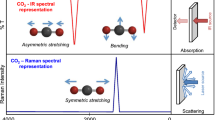Abstract
Higher-order cumulants have a greater ability to mechanically reduce the impact of Gaussian noise, whether it is white or colored. As a consequence, higher-order statistical cumulants are gaining more attention in signal processing. Bispectral peaks arise due to phase coupling, and the distribution of these spectral peaks follows a special law. To analyze the distribution of these spectral peaks, this study adopted the method of harmonic decomposition. Based on Fourier transform theory, the harmonic frequencies where phase coupling occurs are calculated. By conducting a third-order cumulant analysis of the harmonics, the position of the spectral peak can be obtained. Then, using trigonometric functions, the methods of amplifying, reducing, and increasing the spectral peaks were discussed and verified through experiments. Since the collected vibration signal can be regarded as a function that satisfies the Fourier transform conditions, the above theoretical analysis can be applied to the analysis of various actual collected signals. Currently, bispectrum is generally used in actual applications to distinguish signal states by showing different peaks of the signal in different states. However, this application often encounters situations where the bispectrum in different states is difficult to distinguish. The experimental results showed that the methods of amplifying, reducing, and increasing the spectral peaks were helpful in strengthening the practical application effects of the bispectrum.















Similar content being viewed by others
Availability of data and material
Data sharing is not applicable to this article as no new data were created or analyzed in this study.
Code availability
Not applicable.
References
J Guo, Z Shi, D Zhen, Z Meng, F Gu and AD Ball Structural Health Monitoring 21 984 (2022)
J Newman, A Pidde and A Stefanovska Applied and Computational Harmonic Analysis 51 171 (2021)
I Abroug and N Abcha, A Jarno and F Marin Natural Hazards and Earth System Sciences 20 3279 (2020)
L Saidi, M Benbouzid, D Diallo, Y Amirat, E Elbouchikhi and T Wang Energies 13 2888 (2020)
M Xu, Y Han, X Sun, Y Shao, F Gu and AD Ball Mechanical Systems and Signal Processing 165 108280 (2022)
V G Böning, A C Birch, L Gizon, TL Duvall and J Schou Astronomy & Astrophysics 635 A181 (2020)
X Pang, X Xue and W Jiang IEEE/ASME Transactions on Mechatronics 99 1 (2020)
M Sohaib and J Kim IEEE Transactions on Instrumentation and Measurement 99 1 (2019)
J Guo, Z Shi and H Li Sensors 18 2908 (2018)
D Xie, KS Chen and X Yang IEEE Journal of Selected Topics in Applied Earth Observations and Remote Sensing 99 1 (2019)
R Cao, J Cao and JP Mei Multimedia Tools and Applications (2018)
J Ren, JG Lv and BX Zhao IEEE Access 99 1 (2021)
B Pope, L Pueyo and Y Xin The Astrophysical Journal 907 40 (2021)
G Harker, S Cole and A Jenkins Monthly Notices of the Royal Astronomical Society 382 1503 (2018)
Y Han, M Xu, X Sun, X Ding X Chen and F Gu IEEE Sensors Journal 22 4400 (2022)
A Martín-Montero et al. Entropy 23 1016 (2021)
Z Li, J Jiao, Y Wu, R Xie and Z Wang In International Conference on Intelligent Automation and Soft Computing 1283 (2021)
K Czeluśniak, WJ Staszewski and F Aymerich Mechanical Systems and Signal Processing 178 109199 (2022)
J Guo, D Zhen, H Li, Z Shi F Gu and AD Ball ISA transactions 101 408 (2020)
CS Zandvoort and G Nolte Journal of Neuroscience Methods 350 109032 (2021)
J Guo, H Zhang, D Zhen, Z Shi, F Gu and A.D Ball Measurement 151 107240 (2020)
B Huang, G Feng, X Tang, J X Gu, G Xu, R Cattley Energies 12 1438 (2019)
L Saidi, M Benbouzid, D Diallo, Y Amirat, E Elbouchikhi and T Wang In IECON 2019–45th Annual Conference of the IEEE Industrial Electronics Society 1 6998 ( 2019)
J Guo, D Zhen, H Li, Z Shi, F Gu and AD Ball Measurement 139 226 (2019)
G Wang, F Gu, I Rehab, A Ball and L Li Mathematical Problems in Engineering (2018)
Acknowledgements
This paper was supported by the Research Start-up Fund for high-level talents of FuZhou University of International Studies and Trade (FWKQJ202006) and 2022 Guiding Project of Fujian Science and Technology Department (2022H0026).
Funding
Not applicable.
Author information
Authors and Affiliations
Contributions
WW agreed on the content of the study and methodology. WW and YX collected all the data for analysis and completed the analysis based on agreed steps. The results and conclusions were discussed and written together. The author read and approved the final manuscript.
Corresponding author
Ethics declarations
Conflict of interest
The authors declare that they have no conflict of interest.
Consent to participate
Not applicable.
Consent for publication
Not applicable.
Human and animal rights
This article does not contain any studies with human or animal subjects performed by any of the authors.
Informed consent
Informed consent was obtained from all individual participants included in the study.
Additional information
Publisher's Note
Springer Nature remains neutral with regard to jurisdictional claims in published maps and institutional affiliations.
Rights and permissions
Springer Nature or its licensor (e.g. a society or other partner) holds exclusive rights to this article under a publishing agreement with the author(s) or other rightsholder(s); author self-archiving of the accepted manuscript version of this article is solely governed by the terms of such publishing agreement and applicable law.
About this article
Cite this article
Wenbing, W., Xiaojian, Y. Analyzing spectral peak distribution of coupled signals using Fourier transform theory. Indian J Phys 97, 4509–4519 (2023). https://doi.org/10.1007/s12648-023-02728-6
Received:
Accepted:
Published:
Issue Date:
DOI: https://doi.org/10.1007/s12648-023-02728-6




